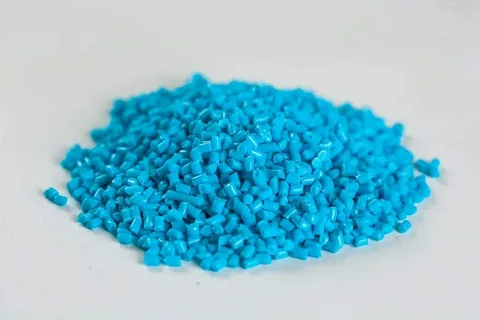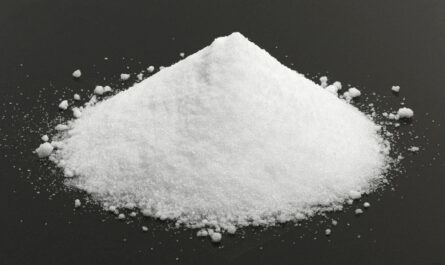Polyamide 12, commonly known as Nylon 12, is a semi-crystalline thermoplastic polymer which has various applications in different industries. In recent years, Polyamide 12 has emerged as one of the most promising materials for 3D printing due to its excellent mechanical and thermal properties. This article discusses in detail about Polyamide 12, its properties and its increasing usage in 3D printing applications.
Material Properties of Polyamide 12
Polyamide 12 is known for its high strength, stiffness and toughness. Some of the key material properties of Polyamide 12 that make it suitable for 3D printing are:
Strength and Stiffness
With a tensile strength of around 55 MPa and Young’s modulus of 1.1 GPa, Polyamide 12 offers good strength and stiffness compared to other 3D printing thermoplastics like PLA and ABS. Its high strength to weight ratio makes it suitable for load bearing applications.
Temperature Resistance
Polyamide 12 has a melting point of around 175°C and can withstand temperatures up to 80°C continuously without any loss of properties. This gives it an advantage for applications requiring heat resistance.
Chemical Resistance
It offers excellent resistance to many chemicals, oils and solvents. Only few solvents like phenol and concentrated acids can dissolve Polyamide 12. This property widens its use in many applications involving harsh chemicals.
Fatigue and Impact Resistance
Polyamide 12 absorbs more impact than other plastics without breaking. It has high fatigue endurance and can withstand repeated flexing and impact loading over its lifetime.
Applications of Polyamide 12 in 3D Printing
Due to the above material properties, Polyamide 12 has emerged as the material of choice for many functional 3D printed parts and industrial applications:
Automotive Parts
Auto manufacturers are increasingly adopting 3D printed Polyamide 12 parts for under bonnet components like brackets, ducts, and covers requiring heat resistance. Its fatigue and impact resistance make it suitable for drive train components.
Aerospace Components
Space applications utilize Polyamide 12 for 3D printed parts experience high stresses and wide temperature ranges in space. Prominent aerospace companies are evaluating Polyamide 12 for structural components in aircrafts.
Medical Implants
Medical applications leverage the material’s biocompatibility and durability to create custom implants like femoral fixtures and jaw replacements via 3D printing.
Consumer Products
Polyamide 12 printed parts are starting to be used in electronics, appliances and consumer goods for housings and other structural components requiring durability.
Why Polyamide 12 for 3D Printing?
Apart from its excellent material properties, Polyamide 12 is highly conducive for 3D printing due to following advantages:
Superior Mechanical Properties
As discussed earlier, Polyamide 12 possesses mechanical attributes of strength, stiffness and impact resistance better suited for functional parts compared to other 3D printing plastics.
Dimensional Stability
The low moisture absorption of less than 1% leads to minimal warping, shrinkage or distortion during and after the 3D printing process. This ensures stable part dimensions.
Environment Friendly
Being non-toxic and bio-compatible, Polyamide 12 filaments do not release hazardous fumes during 3D printing. This makes it safer to produce parts without harming the environment.
Readily Available Filaments
Major filament manufacturers like BASF and Evonik offer desktop Polyamide 12 filaments with low warp and consistent dimensions suitable for FDM 3D printing.
Challenges in 3D Printing Polyamide 12
While Polyamide 12 addresses limitations of other 3D printing materials, there are still challenges to its widespread adoption:
High Filament Cost
Polyamide 12 filaments are significantly more expensive than standard materials like PLA and ABS due to involved extrusion process. This increases the per part production cost.
Specialized 3D Printers Required
Due to its high melting point and viscosity, Polyamide 12 requires all-metal hotends and heated prints beds in the range of 80-100°C for successful 3D printing.
Printing Parameter Optimization
Proper tuning of temperature, speed, retraction and other settings is required depending on the 3D printer to achieve quality prints.
Limited Part Size
The relatively low flow and warping nature of Polyamide 12 restricts printing of very large and complex parts without support structures.
Conclusion
With its excellent mechanical properties and growing availability, Polyamide 12 has great potential to become a mainstream industrial 3D printing plastic. While still at an adoption stage compared to common desktop materials, Polyamide 12 opens up new application avenues for functional prototyping and final part production. Continuous Research is underway to make Polyamide 12 3D printing more economical and user friendly to tap its full potential in different industries.



